Learn how to make poached eggs with this simple technique. Once you master it, you’ll wonder why you ever hesitated. This easy method gives you perfectly tender whites and soft, runny yolks every time.
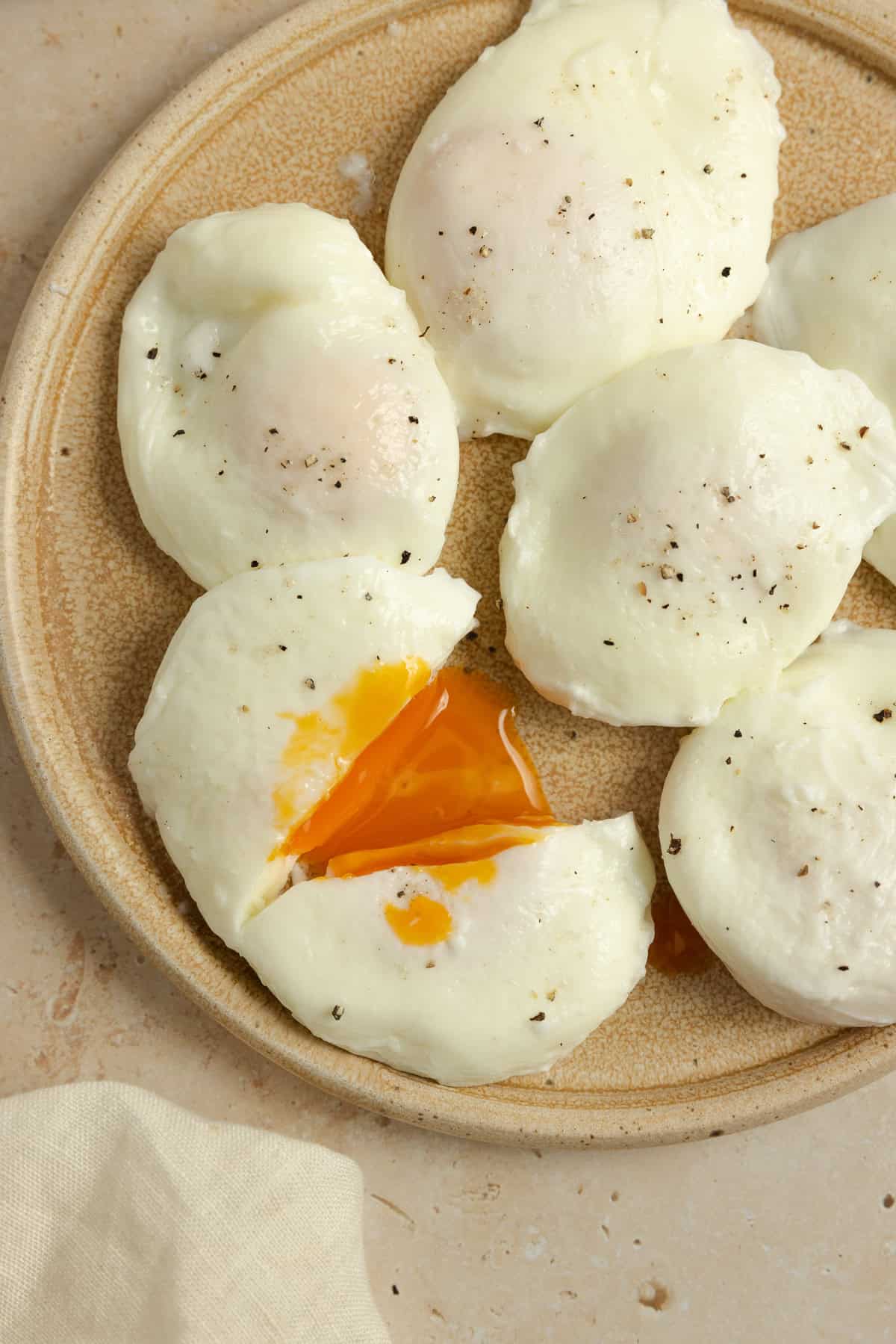
There’s something about a perfect poached egg with the wispy white bits and a runnier yolk that feels both fancy and wholesome — like a little kitchen magic to elevate your meal.
Easy egg recipes are a staple here around the farmhouse! Perfect sunny side up eggs, over hard eggs, or a chicken frittata with spinach are some of our favorite ways to use eggs.
But sometimes you need something easy and quick – enter the best poached eggs!
A tender poached egg egg with the delicate white set and a rich, liquid egg yolk is the perfect topping for toasted sourdough oatmeal bread, mixed green salads, grain bowls, and more.
Whether you’re layering it over jalapeño cheddar sourdough, a sourdough English muffin, avocado toast, or sautéed greens, that golden, runny yolk makes everything better.
If you’ve been intimidated by poaching eggs, you’re not alone. The good news is, they’re surprisingly easy to make. Learn the best way to poach eggs so they turn out beautifully every single time—no fancy equipment, no guesswork, and no microwave-poached eggs either.
Once you try it, this easy recipe will become a regular part of your breakfast, lunch, or even dinner routine. If a firmer yolk is your thing, try over hard eggs or hard boiled eggs next time!
Why You’ll Love This Recipe
Quick and simple – You only need 3 pantry staple ingredients and about 5 minutes to make a perfectly poached egg from scratch. Top with a bit of salt and black pepper, and your meal is ready! Other egg recipes require longer cooking times, but this one is quick.
No special tools required – All you need is a pot, a small bowl, and a slotted spoon or fine mesh sieve – no egg poacher required. Although they look fancy, these are just as easy as making scrambled eggs!
Healthy and versatile – Poached eggs are protein-packed, low in added fat, and delicious with so many different dishes. Make a classic eggs Benedict with a poached egg, English muffin, Canadian bacon, and hollandaise sauce.
Ingredients
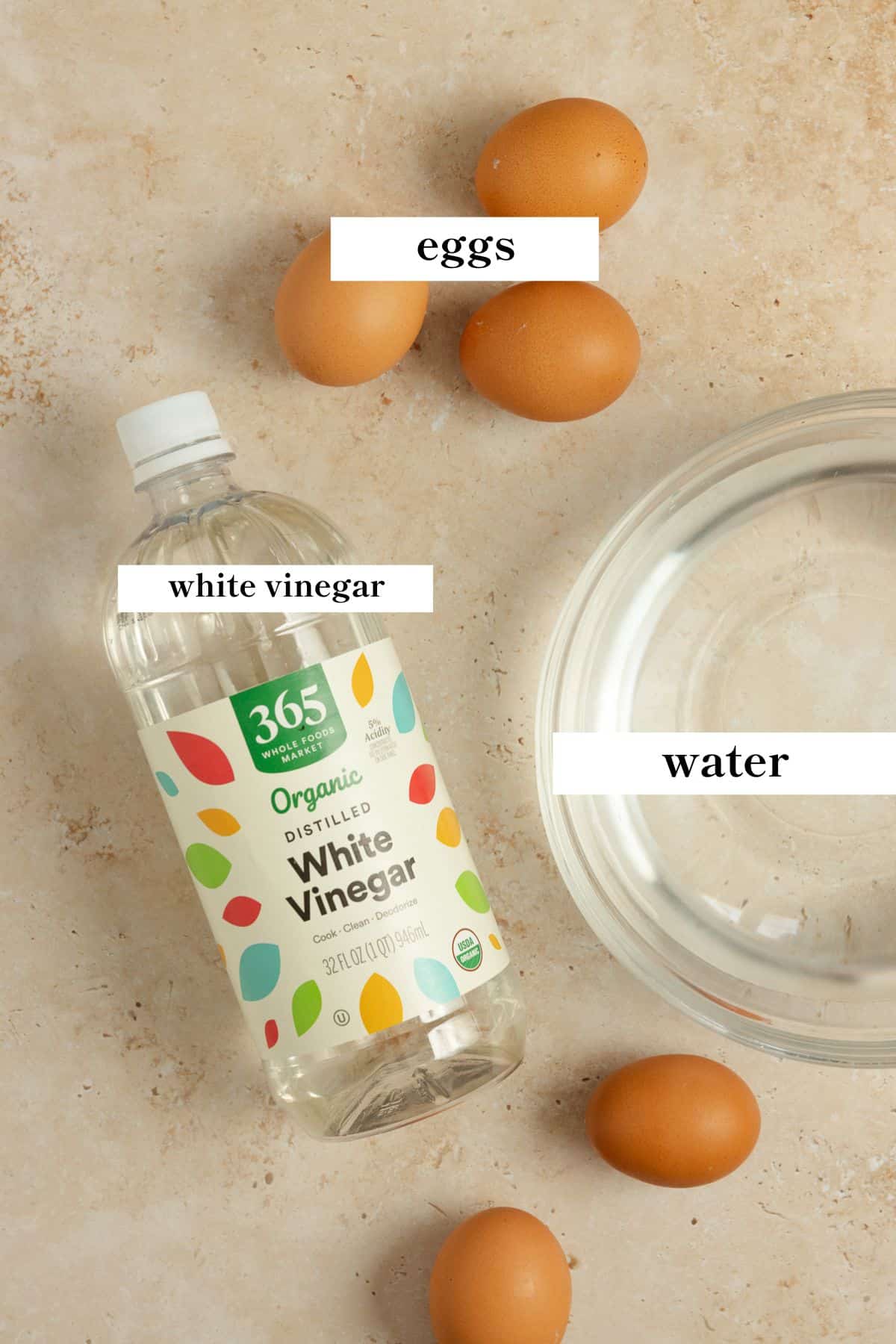
Water – I use cold water filtered through our Berkey water filter.
White vinegar – I like white vinegar, but you could use white wine vinegar or apple cider vinegar.
Eggs – The freshest eggs work best for this recipe. Older eggs will not have the right consistency.
A full ingredient list with exact amounts can be found in the recipe card below.
Tools You May Need
Fine mesh strainer or slotted wooden spoon – This helps to remove the eggs from the simmering water easily.
How to Make Poached Eggs
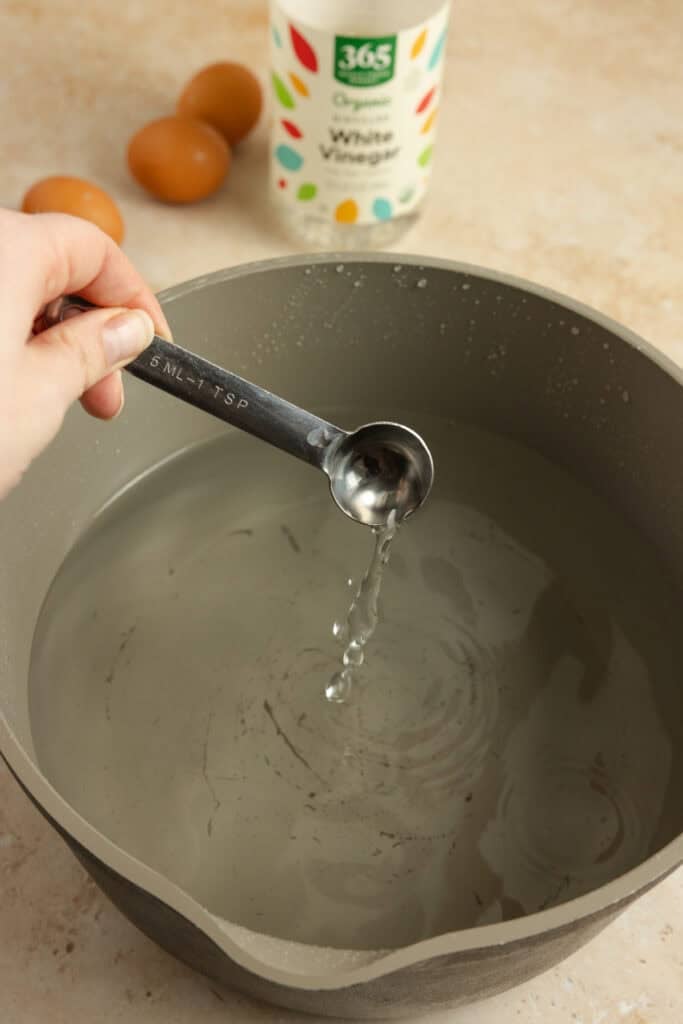
Step 1: Fill a pot with about 4-5 inches of water. Add the vinegar and place over medium-high heat.
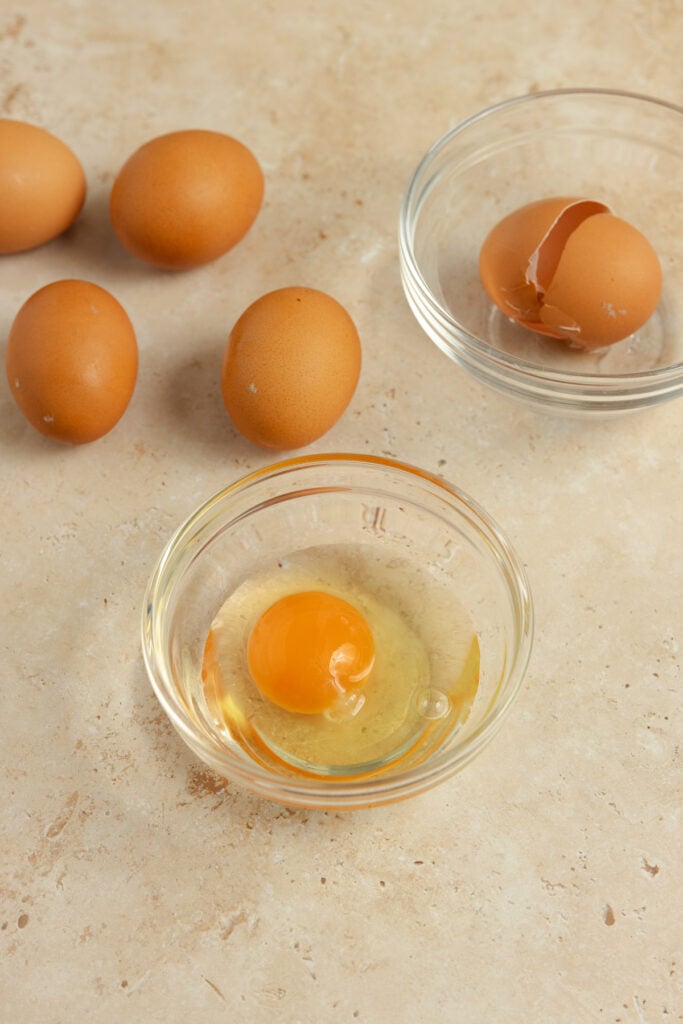
Step 2: Crack an egg into a small bowl and set aside. Keep whole eggs – do not break the yolk.
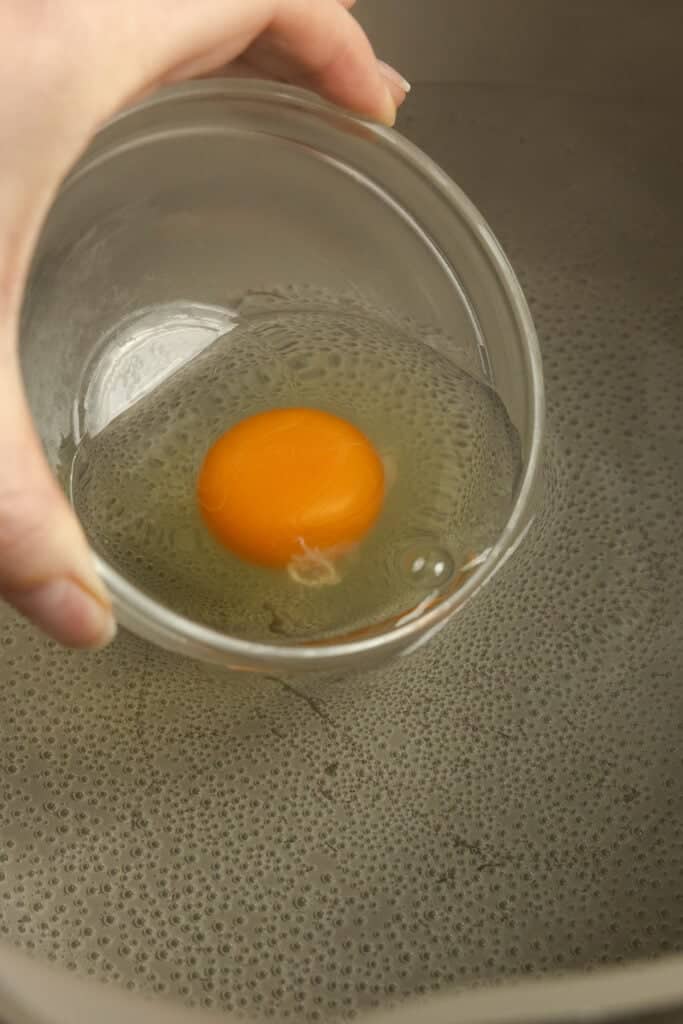
Step 3: Once the water is just about to boil (there should be little bubbles forming on the bottom of the pot and beginning to rise to the top), give the water a stir in the center of the pot to create a gentle whirlpool. Dip the bowl with the egg into the water at an angle to allow some of the hot water to get into the bowl for about 5-10 seconds, then gently pour the egg into the water. Make sure the water never comes to a full boil.
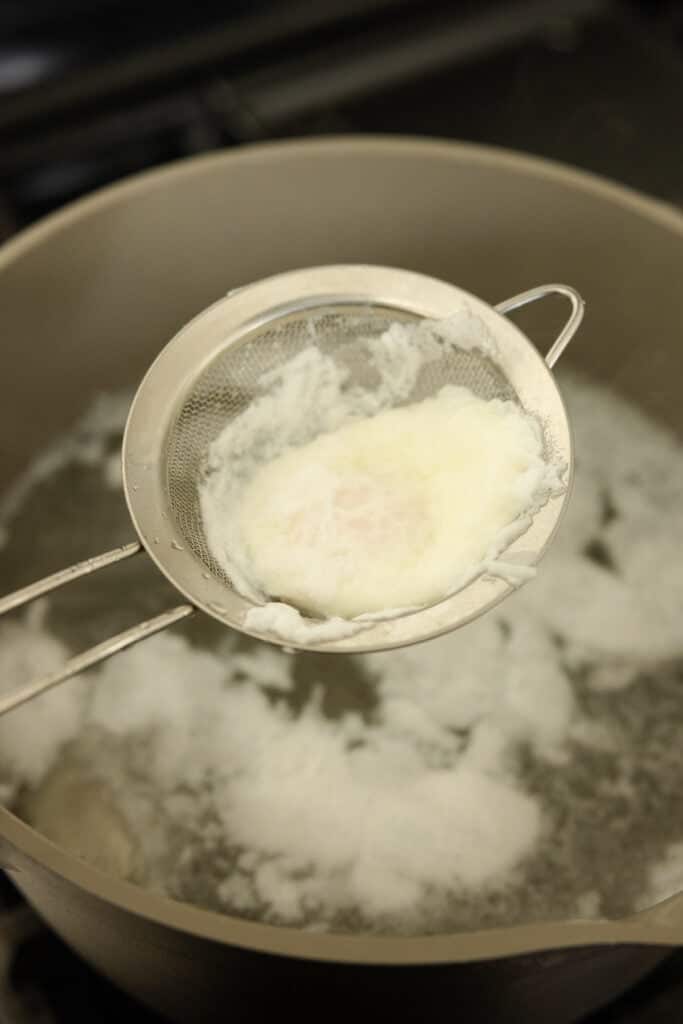
Step 4: Allow the egg to cook for 4 minutes, then use a mesh strainer or slotted spoon to remove the egg from the pot. You’ll want to leave the egg alone/not touch it so the whites can naturally wrap around the yolk during the poaching process.
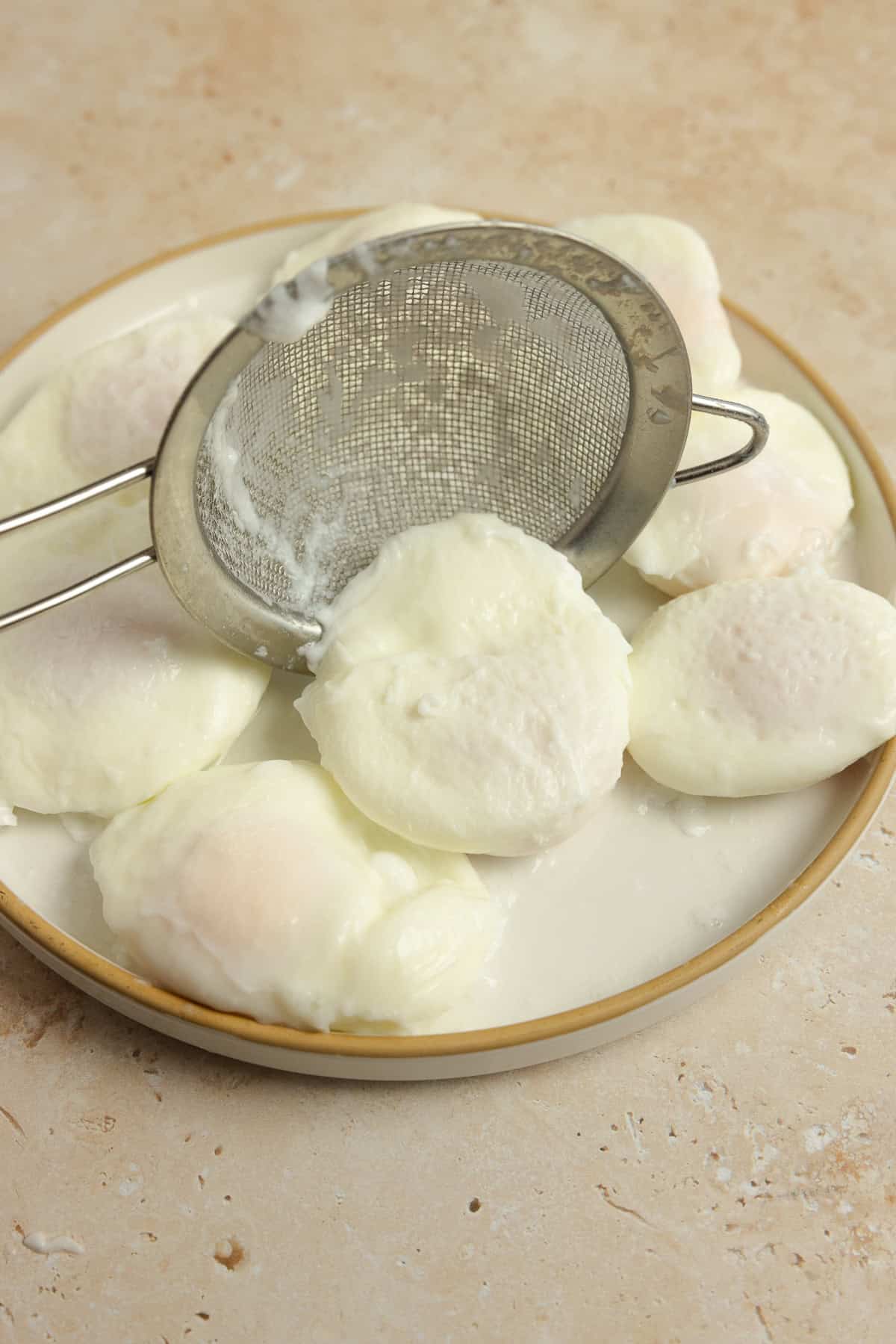
Step 6: Repeat this process with the remaining eggs, poaching 2 at a time until all of the eggs are poached.
Tips
- Only use really fresh eggs for the best results.
- Make sure the water doesn’t come to a full boil as that will break up the egg whites. Reduce the heat if needed to maintain a gentle simmer.
- Only cook 2 eggs at a time to avoid crowding in the pot. Add additional eggs after the previous are fully cooked.
- Allow leftovers to cool and place cold eggs into an airtight container in the fridge for up to 2 days. Reheat in barely simmering water in a shallow pan for 30 – 60 seconds before serving.
Recipe FAQs
Sunny side up eggs, over easy eggs, and poached eggs all have standard runny yolks. Over hard and hard boiled eggs have firm yolks.
My little trick for perfect poached eggs is to not let the water get to even a gentle boil. Keep the water at a bare simmer while the egg cooks for firmer whites.
It doesn’t matter what vinegar you use, but some may impart a bit of flavor to the cooked eggs. I prefer simple white vinegar.
The easiest way to make sure your egg stays together is to use vinegar! This keeps the egg together and results in tighter whites.
More Breakfast Recipes from the Farmhouse
- Easy Zucchini Frittata
- Instant Pot Yogurt
- Apple Cinnamon French Toast Casserole
- Ham And Cheese Frittata
- Sourdough Breakfast Sandwich
If you try this recipe and love it, I would love it if you could come back and give it 5 stars! Tag me on Instagram @farmhouseonboone.
Poached Eggs
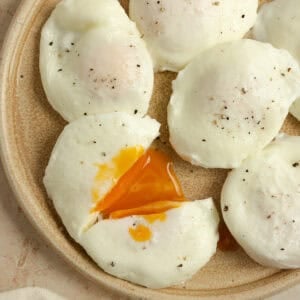
Ingredients
- Water
- 1 teaspoon white vinegar
- 8 eggs
Instructions
- Fill a pot with about 4 – 5 inches of water. Add the vinegar and place over medium-high heat.
- Crack an egg into a small bowl and set aside.
- Once the water is just about to boil (there should be tiny bubbles forming on the bottom of the pot and beginning to rise to the top), give the water a stir in the center of the pot to create a gentle whirlpool.
- Dip the bowl with the egg into the water at an angle to allow some of the hot water to get into the bowl for about 5 -10 seconds, then gently pour the egg into the water. Make sure the water never comes to a full boil.
- Allow the egg to cook for 4 minutes, then use a mesh strainer or slotted spoon to remove the egg from the pot. You’ll want to leave the egg alone/not touch it so the whites can naturally wrap around the yolk during the poaching process.
- Repeat this process with the remaining eggs, poaching 2 at a time until all of the eggs are poached.
Notes
- Only use really fresh eggs for the best results.
- Make sure the water doesn’t come to a full boil as that will break up the egg whites. Reduce the heat if needed.
- Only cook 2 eggs at a time to avoid crowding in the pot.
Nutrition
Nutrition information is automatically calculated, so should only be used as an approximation.
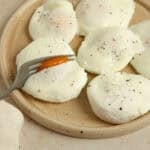
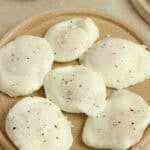
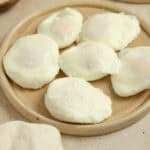
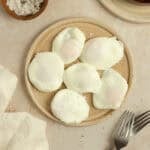


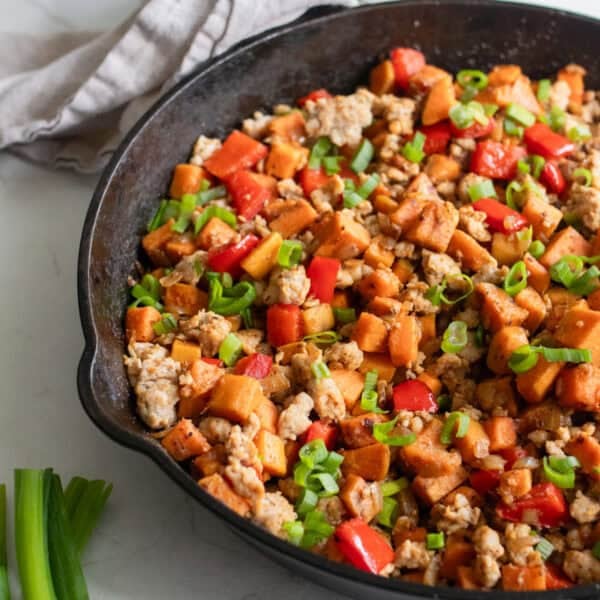
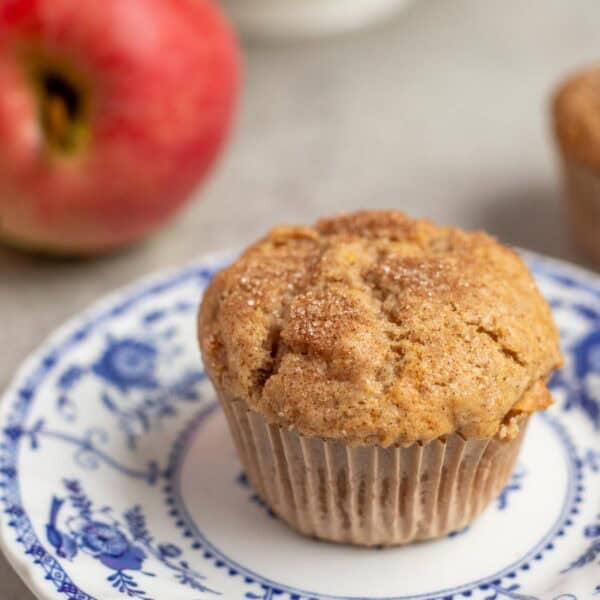






Okay, I’ve been poaching eggs for years wanting that just perfect runny egg. Never happened. But OMG this worked!! Thank you so much for this, I’m a happy camper now. TLC
Switching up our breakfast routine with these
I’ve got a better foolproof way, place a small sheet of cling film in a ramekin, crack the egg into the film and tie, place in boiling water till cooked perfect every time.
Graham (trainee chef)
I’m sure this recipe works fine, but making poached eggs are much easier.
Bring 2-3″ water to a full boil in a small but deep sauce pan. Break one or two eggs into a small bowl. Gently slide the eggs into the water, cover the pot and take it off the heat. Set timer for 3 mins. Have a clean kitchen cloth and a slotted spoon at hand. Gently lift eggs from the water and set on the cloth to absorb some of the moisture. Butter, salt and pepper and you’re all set.
Enjoy.
Remarkable